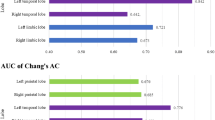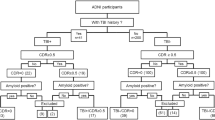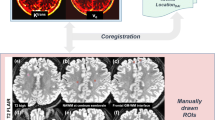Abstract
Objective
The objective of this study was to identify specific brain lesions with regional perfusion abnormalities possibly associated with neuropsychological impairments (NPI), as sequela after mild traumatic brain injury (MTBI), using 99mTc-ethylcysteinate dimer single photon emission computed tomography (Tc-99m ECD SPECT) and its novel analytic software.
Methods
We studied 23 patients with diffuse axonal injury with NPI group (Impaired-DAI), 26 with MTBI with NPI group (Impaired-MTBI) and 24 with MTBI without NPI group (Healthy-MTBI). In each subject, Tc-99m ECD SPECT images were analyzed by easy Z score imaging system (eZIS) and voxel-based stereotactic extraction estimation (vbSEE). Segmented into lobule levels, ROIs were set in 140 areas in whole brain, and relative regional low Tc-99m ECD uptake was computed as “extent” (rate of coordinates with Z score >2.0 in the ROI). Receiver operating characteristic analysis was performed using “extent” to discriminate the three groups.
Results
The highest area under the curve (AUC) value for data of Impaired-DAI and Healthy-MTBI groups was obtained in ROI on the left anterior cingulate gyrus (LtACG), with AUC of 0.93, optimal “extent” cutoff value of 10.9 %, sensitivity 87.0 %, specificity 83.3 %. The highest AUC value for data of Impaired-MTBI and Healthy-MTBI groups was also in the LtACG, with AUC of 0.87, optimal “extent” cutoff value of 9.2 %, sensitivity 73.1 %, specificity 83.3 %.
Conclusions
Using two analytic software packages, eZIS and vbSEE, we identified specific lesions with low regional Tc-99m ECD uptake possibly associated with NPIs after MTBI. Especially, this trend was most marked in the left anterior cingulate gyrus in MTBI patients with NPIs and those with DAI. The optimal “extent” cutoff value, as a criterion for SPECT abnormality, might help the diagnosis of NPIs after MTBI.






Similar content being viewed by others
References
Hashimoto K, Abo M. Abnormal regional benzodiazepine receptor uptake in the prefrontal cortex in patients with mild traumatic brain injury. J Rehabil Med. 2009;41:661–5.
Meares S, Shores EA, Batchelor J, Baguley IJ, Chapman J, Gurka J, et al. The relationship of psychological and cognitive factors and opioids in the development of the postconcussion syndrome in general trauma patients with mild traumatic brain injury. J Int Neuropsychol Soc. 2006;12:792–801.
Gowda NK, Agrawal D, Bal C, Chandrashekar N, Tripati M, Bandopadhyaya GP, et al. Technetium Tc-99m ethyl cysteinate dimer brain single-photon emission CT in mild traumatic brain injury: a prospective study. Am J Neuroradiol. 2006;27:447–51.
Ponsford J. Rehabilitation interventions after mild head injury. Curr Opin Neurol. 2005;18:692–7.
Holm L, Cassidy JD, Carroll LJ, Borg J. Summary of the WHO collaborating centre for neurotrauma task force on mild traumatic brain injury. J Rehabil Med. 2005;37:137–41.
Davalos DB, Bennett TL. A review of the use of single-photon emission computerized tomography as a diagnostic tool in mild traumatic brain injury. Appl Neuropsychol. 2002;9:92–105.
Bonne O, Gilboa A, Louzoun Y, Kempf-Sherf O, Katz M, Fishman Y, et al. Cerebral blood flow in chronic symptomatic mild traumatic brain injury. Psychiatry Res. 2003;124:141–52.
Gross H, Kling A, Henry G, Herndon C, Lavretsky H. Local cerebral glucose metabolism in patients with long-term behavioral and cognitive deficits following mild traumatic brain injury. J Neuropsychiatry Clin Neurosci. 1996;8:324–34.
Momosaki R, Abo M, Kakuda W, Uruma G. Which cortical area is related to the development of dysphagia after stroke? A single photon emission computed tomography study using novel analytic methods. Eur Neurol. 2012;67:74–80.
Katagi H, Uruma G, Uematsu M, Kobayashi K, Kakuda W, Abo M. Cerebral blood flow analyzed with the easy Z-score Imaging System and voxel-based Stereotactic Extraction Estimation in patients with unilateral spatial neglect (in Japanese). Jikeikai Med J. 2008;123:237–47.
Uruma G, Kakuda W, Abo M. Changes in regional cerebral blood flow in the right cortex homologous to left language areas are directly affected by left hemispheric damage in aphasic stroke patients: evaluation by Tc-ECD SPECT and novel analytic software. Eur J Neurol. 2010;17:461–9.
Matsuda H, Mizumura S, Nagao T, Ota T, Iizuka T, Nemoto K, et al. Automated discrimination between very early Alzheimer disease and controls using an easy Z-score imaging system for multicenter brain perfusion single-photon emission tomography. Am J Neuroradiol. 2007;28:731–6.
Gardner RM, Bird FL, Maguire H, Carreiro R, Abenaim N. Intensive positive supports for adolescents with acquired brain injury. J Head Trauma Rehabil. 2003;18:52–74.
Ylvisaker M, Jacobs HE, Feeney T. Positive supports for people who experience behavioral and cognitive disability after brain injury. J Head Trauma Rehabil. 2003;18:7–32.
Uruma G, Hashimoto K, Kohno M, Kaito N, Taya K, Abo M, et al. Positive behavioral support to a patient with traumatic brain injury and his family from the acute stage. Jikeikai Med J. 2006;53:141–5.
Okamoto T, Hashimoto K, Aoki S, Ohashi M. Cerebral blood flow in patients with diffuse axonal injury-examination of the easy Z-score imaging system utility-. Eur J Neurol. 2007;14:540–7.
Gennarelli TA. Emergency department management of head injuries. Emerg Med Clin N Am. 1984;2:749–60.
Friston KJ, Frith CD, Fletcher P, Liddle PF, Frackowiak RS. Functional topography: multidimensional scaling and functional connectivity in the brain. Cereb Cortex. 1996;6:156–64.
Matsuda H, Mizumura S, Soma T, Takemura N. Conversion of brain SPECT images between different collimators and reconstruction processes for analysis using statistical parametric mapping. Nucl Med Commun. 2004;25:67–74.
Mizumura S, Kumita S, Cho K, Ishihara M, Nakajo H, Toba M, et al. Development of quantitative analysis method for stereotactic brain image: assessment of reduced accumulation in extent and severity using anatomical segmentation. Ann Nucl Med. 2003;17:289–95.
Talairach J, Tournoux P. Co-planar stereotaxic atlas of the human brain. New York: Thieme Medical Publishers; 1988.
Deamon T. http://www.ihb.spb.ru/~pet_lab/MSU/MSUMain.html. Accessed 29 July 2009
Nakashima T, Nakayama N, Miwa K, Okumura A, Soeda A, Iwama T. Focal brain glucose hypometabolism in patients with neuropsychologic deficits after diffuse axonal injury. Am J Neuroradiol. 2007;28:236–42.
Devinski O, Morrell MJ, Vogt BA. Contribution of anterior cingulate cortex to behaviour. Brain. 1995;118:279–306.
Kato T, Nakayama N, Yasokawa Y, Okumura A, Shinoda J, Iwama T. Statistical image analysis of cerebral glucose metabolism in patients with cognitive impairment following diffuse traumatic brain injury. J Neurotrauma. 2007;24:919–26.
Kawai N, Maeda Y, Kudomi N, Yamamoto Y, Nishiyama Y, Tamiya T. Focal neuronal damage in patients with neuropsychological impairment after diffuse traumatic brain injury: evaluation using 11C-flumazenil positron emission tomography with statistical image analysis. J Neurotrauma. 2010;27:2131–8.
Matsushita M, Hosoda K, Naitoh Y, Yamashita H, Kohmura E. Utility of diffusion tensor imaging in the acute stage of mild to moderate traumatic brain injury for detecting white matter lesions and predicting long-term cognitive function in adults. J Neurosurg. 2011;115:130–9.
Graham DI, Gennarelli TA. Pathology of brain damage after head injury. In: Cooper PR, Golfinos JG, editors. Head injury. 4th ed. New York: McGraw-Hill; 2000. p. 176–94.
Kasahara K, Hashimoto K, Abo M, Senoo A. Voxel- and atlas-based analysis of diffusion tensor imaging may reveal focal axonal injuries in mild traumatic brain injury—comparison with diffuse axonal injury. Magn Reson Imaging. 2012;30:496–505.
Adams JH, Graham DI, Murray LS, Scott G. Diffuse axonal injury due to nonmissile head injury in humans: an analysis of 45 cases. Ann Neurol. 1982;12:557–63.
Adams H, Mitchell DE, Graham DI, Doyle D. Diffuse brain damage of immediate impact type. Its relationship to “primary brain-stem damage” in head injury. Brain. 1977;100:489–502.
Van Laere KJ, Warwick J, Versijpt J, Goethals I, Audenaert K, Van Heerden B, et al. Analysis of clinical brain SPECT data based on anatomic standardization and reference to normal data: an ROC-based comparison of visual, semiquantitative, and voxel-based methods. J Nucl Med. 2002;43:458–69.
Acknowledgments
The authors appreciate the excellent technical support provided by Dr. M. Uchiyama and the radiological technologists at the Department of Radiology, Jikei University School of Medicine. This study was supported by a grant from The General Insurance Association of Japan. The authors declare that we have no conflict of interest.
Author information
Authors and Affiliations
Corresponding author
Rights and permissions
About this article
Cite this article
Uruma, G., Hashimoto, K. & Abo, M. A new method for evaluation of mild traumatic brain injury with neuropsychological impairment using statistical imaging analysis for Tc-ECD SPECT. Ann Nucl Med 27, 187–202 (2013). https://doi.org/10.1007/s12149-012-0674-4
Received:
Accepted:
Published:
Issue Date:
DOI: https://doi.org/10.1007/s12149-012-0674-4




